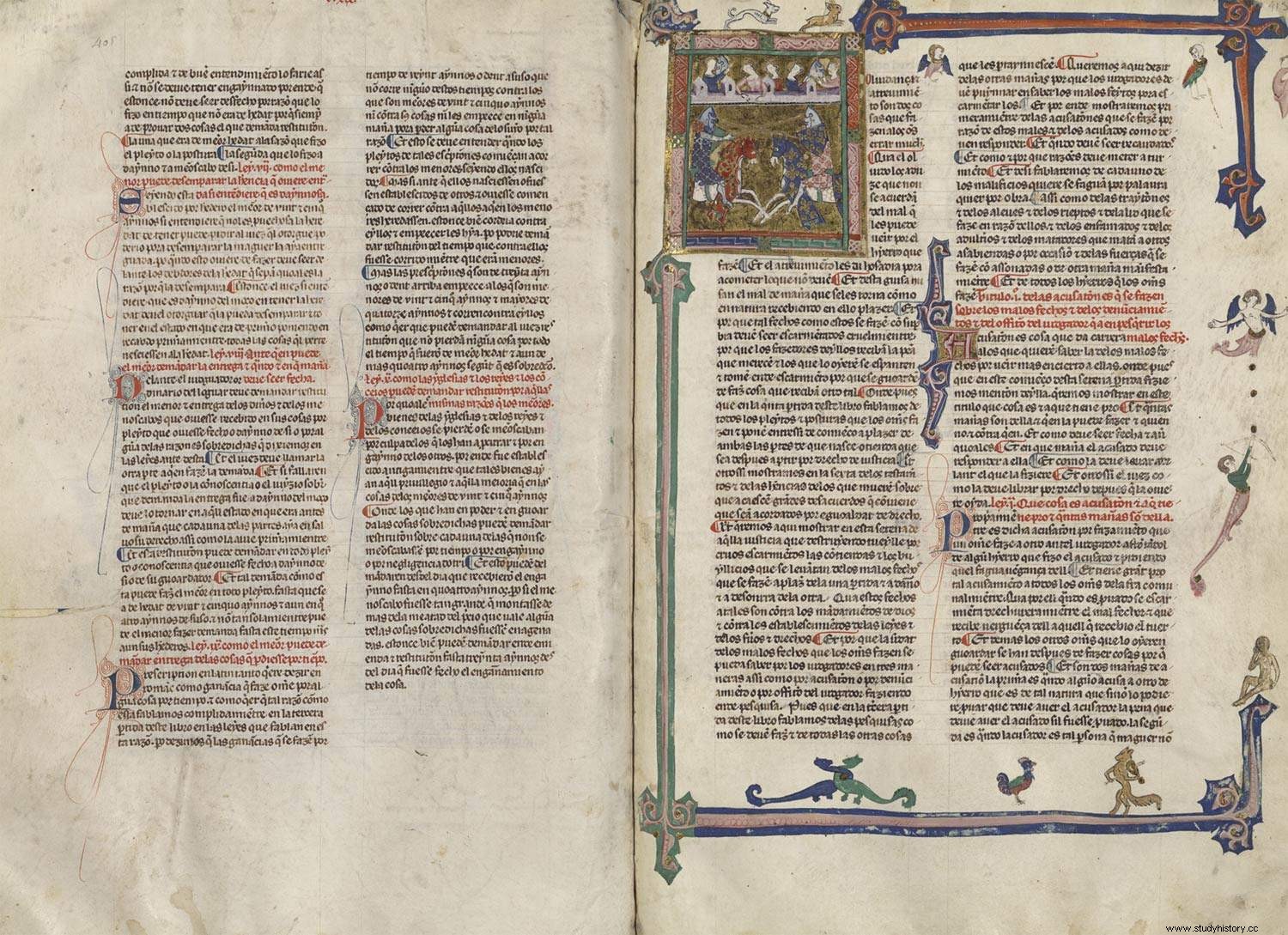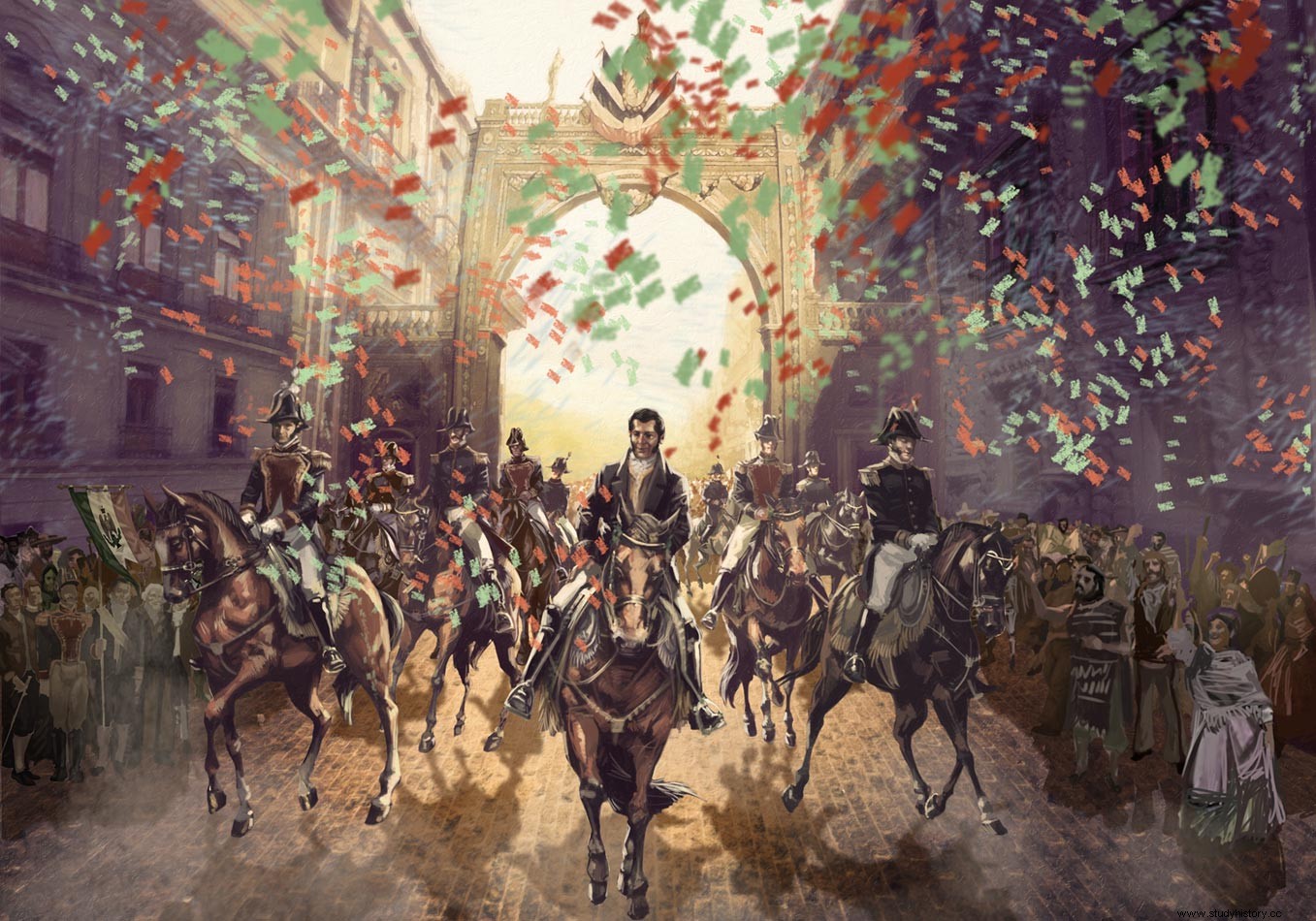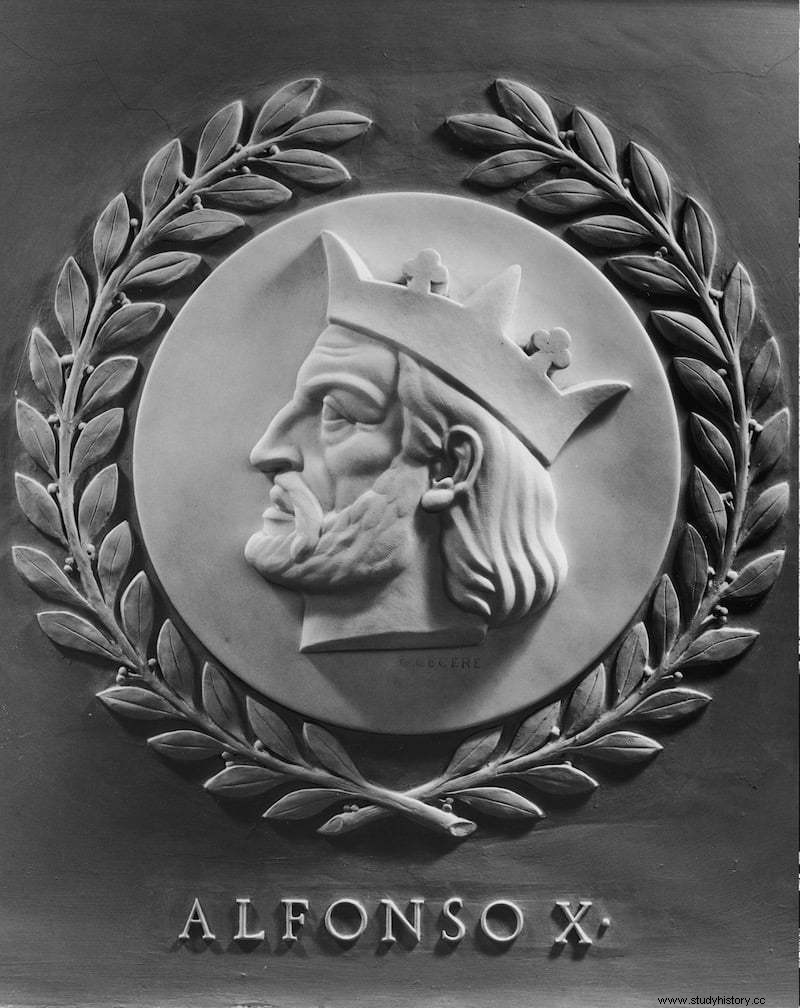Despite the "English" origin of the United States, in fact, as we all know, it was founded when the Thirteen British Colonies on the East Coast declared their independence in 1776, it would be absurd to deny the evidence of our presence in North America:the Spanish origin of the dollar, the statue of Fray Junípero Serra present in the Capitol representing California, Queen Isabella the Catholic, the first woman to appear on US coins and stamps, Spanish toponyms... and Castilian laws from the 13th century, specifically the Siete Partidas, present in the jurisprudence of various territories today. To sample, a button:in 1989 alone there were more than three hundred rulings citing the Siete Partidas in the Supreme Courts of Louisiana, Texas, Arizona, New Mexico and California.

Seven Games
The Siete Partidas were a body of laws drafted in the Crown of Castile during the reign of Alfonso X el Sabio with the aim of achieving legal uniformity in the kingdom in the 13th century. But it was not only a compendium of laws, literary, scientific or philosophical works were also cited and covered all areas of society:the First dealt with canon law, the Second with political law, the Third with procedural law, the Fourth, Fifth and Sixth of private law and the Seventh of criminal law.
The Siete Partidas were known throughout Western Europe and translated into various European languages. Some rules of procedural law and private law (Partidas 3, 4, 5 and 6) remained in force in Spain until the Spanish Civil Code of 1889. Logically, if they were in force in Spain from the 13th century to 1889, they were also part of the legal system of the American territories under the Crown of Castile, adapted to a radically different territory historically and geographically. When these territories became independent, the Spanish laws that had been part of these societies for centuries did not disappear, these laws cohabited together with the new regulations that were being promulgated little by little.

Mexico became independent from Spain in 1821 and in 1857 the Political Constitution of the Mexican Republic was approved, in which it was stated that «in the topics not mentioned or doubtful it is necessary to continue resorting to the Spanish fueros and Las Siete Partidas as sources «. In the middle of the 20th century, the Mexican Congress decreed that the Cortes had to continue using the Spanish procedural rules as long as there was no conflict with the domestic regulations. After the war between the United States and Mexico, the new borders between the two countries were established by setting them on the Rio Grande and Mexico lost a large part of its territory, which today are the states of California, Nevada, Utah, New Mexico, Texas and Mexico. parts of Arizona, Colorado, Wyoming, and Oklahoma. These territories, which became part of another country with its own regulations, maintained the previous laws, especially with regard to real estate ownership. In fact, in the Treaty of Guadalupe Hidalgo of 1848, which ended the war, the property rights of the lost lands were established, for example.
The properties of all kinds existing in the said territories, and which now belong to Mexicans not established in them, will be respected. Their current owners and heirs will enjoy respect to them as if they belonged to citizens of the United States.
The litigations that have been arising in the states that were once part of Mexico, and in which the laws of the Siete Partidas are cited, have been processes that have to do with property ownership, wills and land laws. and waters. For example, in 1984 the city of Los Angeles tried to acquire part of the Rancho Ballona property for public use, specifically the part of the waterfront. Based on the laws of Partida Tercera, the Supreme Court ruled in favor of the city:
The things that communally belong to all the creatures that live in this world are these:the air, the waters of the rain and the sea and its shore, since any creature that lives can use each of these things as it needs. /P>
In 1851, in California, the case of a dying man who had made a will shortly before he died in which he said that all his possessions, including the house, should be sold to pay off the debts before distributing the inheritance. The daughters appealed alleging that he could not sell the part of the property that belonged to his deceased wife, and for this they relied on the Fourth Item...
Although marriage is a partnership of possessions that belong communally and equally to husband and wife, the husband cannot "sell or alienate or misplace" the part of the property that belonged to his wife.
In addition to basing the appeal on a 13th-century text, medieval Castilian words were used within a legal text written in English.
In 1927, the state of Texas repossessed land along the Frío River where a company had permission to search for oil, based on Partida Tercera…
Rivers and ports and public roads belong to all men communally, in such a way that those who are from another foreign land can use them as much as those who dwell and live in that land where they are from.
Another case is that of Louisiana, which was acquired by the US in 1803 from France but which until 1800 had been Spanish. In 1820, the necessary expense was approved to translate the Siete Partidas into English so that the people would better understand the laws that governed them. Likewise, vestiges of the Siete Partidas still remain in its legislation today, to such an extent that many of the provisions of the Louisiana Civil Code are literal translations and other simple adaptations of the medieval code.
What strikes me as amazing is that the Siete Partidas, originating in medieval Spain in the 13th century, play such an important role in United States jurisprudence today, and so is the number of terms and citations in medieval Castilian appear in legal texts. What is well done lasts... even if it is «made in Spain «. And this was recognized by the House of Representatives when in 1949 a reform was undertaken in the Capitol, which gave it its current appearance, and a gallery of 23 marble reliefs was added that represent as many outstanding figures in history, and there is our Alfonso X the Wise.

My latest book is now on sale on Amazon:
